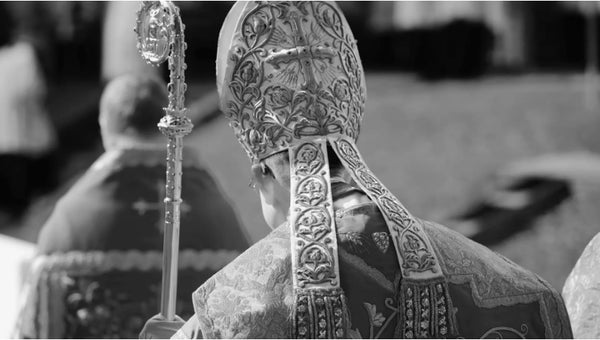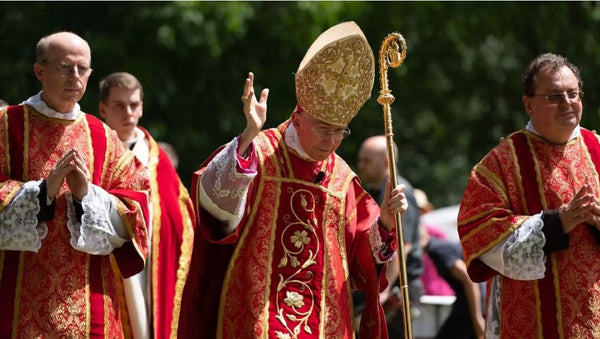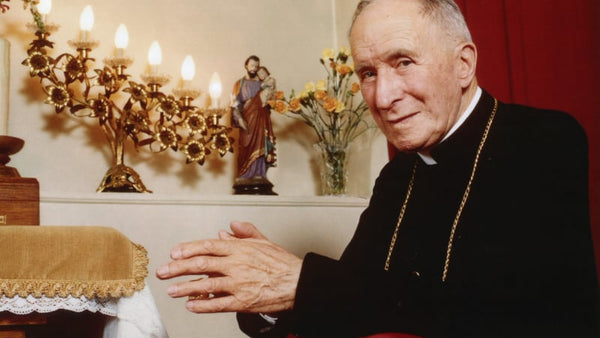The Mysterious Origins of Lent

Catholics today understand the Church’s observance of Lent and Holy Week has undergone significant changes over two millennia. But how, and when did the practice begin?
Geography, divergent spiritual traditions, and even differences in calculating the date of Easter (Pascha) contributed to diverse liturgical practices across Christendom—practices which themselves have morphed within the local churches from which they originally arose. Following the Council of Nicaea (325 AD), both East and West settled on a 40-day period of Lenten observance followed by Holy Week and culminating with the celebration of Our Lord’s Resurrection. Few, however, can agree upon what Lent looked like throughout the Church before then.
No Consensus View
In a 2013 article, “The Early History of Lent,” Nicholas Russo surveys three competing theories of Lenten development in the early Church, ranging from Lent emerging out of a post-Theophany (Epiphany) 40-day fasting period found among Egyptian Christians to Lent emerging out of an array of different fasts found throughout the Church to the idea that the origins of Lent are a mystery which is impossible to solve. Russo notes that though the Council of Nicaea did not intend to establish fixed Lenten practices, it did establish a method for calculating the date of Easter which was honored on different dates throughout the Church up until that time. Following this, the 40-day period of observance became normative, albeit with geographical variations. For instance, in the Latin West, the 40 days begin on Ash Wednesday whereas in the Byzantine East, Lent commences at the start of the week, known as Clean Monday.
Although it is not possible to reconstruct all the pre-Nicene Lenten practices in the Church, it is doubtful that the idea of holding a 40-day fast sprung up out of nowhere. The Biblical antecedents for the number “40” applying to the Lenten fast are manifold: The Great Flood in Genesis lasted 40 days and nights; the Israelites wandered in the desert for 40 years according to Exodus; and Moses, Elias, and Christ all fasted for 40 days. Other Biblical periods of fasting and repentance, such as Ninevite fast in Jonah, lasted 40 days as well. As for fasting before Easter, it seems that by the second century, Christians were taking on a rigorous fast in the period now referred to as the Triduum which extended steadily throughout Holy Week, though placing it at the beginning of Lent was, again, not universally adhered to until the middle of the fourth century.
Liturgically speaking, Lenten observance continued to develop long after the Council of Nicaea. In the Byzantine East, the core Lenten liturgical book known as The Triodion (Three Odes) was composed in Jerusalem before it was supplanted by a recension produced in Constantinople. Instead of eliminating the Jerusalem texts entirely, this rich collection of hymnography was reassembled and spread out to include special commemorations leading up to Lent (e.g., the Sundays of the Publican and Pharisee and Prodigal Son) and those of the Lenten period (e.g., Sundays of the veneration of the Cross and St. John Climacus). In the West, Lenten liturgical praxis was cemented in the centuries after Nicaea, with Ash Wednesday being instituted as the start of Western Lent by Pope St. Gregory the Great in the sixth century.
Shorter Observance, Greater Rigor
While it has been tempting for contemporary Catholics, particularly academics, to dip into history to justify modern reforms to Church disciplinary and liturgical practice, the paucity of concrete information on the early history of Lent is hardly a justification for disregarding the season altogether. Even if the 40-day fast is of more “recent” (fourth century) vintage, Christians in both the East and West were expected to undertake a near-total fast from Good Friday to Easter during the early centuries of the Church. Penitential practices for both the excommunicated and catechumens called for rigorous fasting as well, regardless of the time of year. While the Church eventually settled on placing readmission to the Eucharist and baptism on or around Holy Saturday, this was not always so. Christians were expected to fast for a variety of individual and liturgical reasons. These fasts typically directed not just when a person can eat or how much, but also restricted the types of food available.
This stringency is still an ideal found mainly in the Christian East, though its actual observance today is piecemeal at best. Catholics who complain that even the light fasting and abstinence schedule of Lent is too much are unlikely to embrace the heavy asceticism of Holy Week that was practiced in the pre-Nicene period. To return to the “early Church” in this regard would not be to displace fasting and abstinence but rather concentrate it in a manner few outside of monastic circles are prepared for. Moreover, the small amounts of food permitted during fasting periods in the early Church were often to sustain the faithful during long periods of prayer in church. How many Catholics are open to waking in the middle of the night for three hours of Matins when they have become accustomed to feeling that an hour-long Mass is “too much”?
A Time of Preparation
The historical origins of Lent, while fascinating, should not distract Catholics today from using the 40 days as a time of preparation for the Resurrection of Our Lord, God, and Savior Jesus Christ. Even though Lenten disciplinary practices were relaxed substantially during the last century, Catholics can still prayerfully consider how to spiritually engage with one of the Church’s holiest seasons. Today’s disciplines provide a “base floor” upon which to build over the course of days, weeks, and even years. Those who take on heavily penitential practices all at once are likely to slip and fall prey to despair. Those who are content to simply follow the bare minimum may do nothing wrong in the eyes of canon law, but can they truly believe they’ve behaved in a God-pleasing manner?
Rather than fall prey to either pole, perhaps it is best to recount the 9th century hymn of the Sicilian monk known only as Joseph the Hymnographer:
Let us all make haste to humble the flesh by abstinence, as we set out upon the divine and unblemished Fast; and with prayers and tears let us seek out our Salvific Lord. Laying aside all memories of wicked things, let us cry aloud: We have sinned against Thee; save us as Thou didst the men of Nineveh in days of old, O Christ King, and in Thy compassion make of us dwellers in Thy heavenly Kingdom.
FEBRUARY 28, 2023 SOURCE: DISTRICT OF THE USA
Image: "The Temptation of Christ" by Juan de Flandes - National Gallery of Art
Also in News from Tradition

Death of Bishop Bernard Tissier de Mallerais

Prayer Intention for Bishop Tissier de Mallerais
We ask for prayers for His Excellency Bishop Tissier de Mallerais.
On the morning of Saturday 28 September, after the Angelus, he fell on the stairs of the seminary in Ecône and lost consciousness. He is currently in hospital.

Archbishop Marcel Lefebvre on the Feast of Christ the King
The following sermon for the Feast of Christ the King was delivered by Archbishop Marcel Lefebvre, founder of the Society of Saint Pius X (SSPX), on October 29, 1989 in Dublin, Ireland.
Today we must pray to Our Lord Jesus Christ, we must pray to the Blessed Virgin Mary to remain true Catholics and to do everything possible to become saints. We must come to church frequently, pray in our church, receive the graces of the sacraments in order to become saints, to sanctify our souls and to go to heaven with all the members of our families and all those who kept the Catholic Faith here on earth and now enjoy the happiness of heaven.

Angelus Press
Author